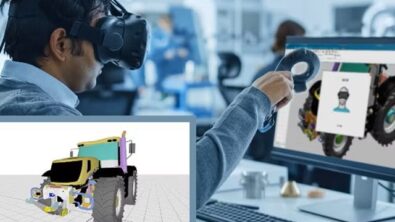How AI can explore a design space

When it comes to product design, no matter what the final goal, all projects must start in the same place: design space exploration. Without understanding the range of possible designs, finding, and picking the best design (or family of designs) to address a product’s requirements would be simply impossible.
As products grow increasingly complex, this process is also becoming more resource intensive and time consuming but now, thanks to recent advances in artificial intelligence (AI) and machine learning (ML), there are new ways to accelerate design space exploration and reach optimal designs faster. In a recent podcast, Dr. Gabriel Amine-Eddine, Technical Product Manager for the HEEDS Design Exploration Team, discussed the ways design space exploration tools, like Siemens Xclerator’s HEEDS, work and how they can be accelerated by adopting AI and ML.
How to explore a design space
HEEDS is a multidisciplinary design analysis and optimization software package that provides process automation and design space exploration, Gabriel explains, which designers and engineers can use to find innovative solutions that satisfy all requirements for a given product. This process interacts with design and simulation tools to automatically examine the way varying different parameters affect the final result of a design before offering a selection of best results for human consideration.
While the results generated from such a process are vital to creating the highly optimized and complex products of today, completing it is still time and resource intensive. Each time the parameters are varied a simulation must be run to find out how well the result performs or if it even meets the project requirements. Running simulations is a long and computationally expensive task which can heavily slow down the design process and, often, results in the first viable result being chosen since it is financially infeasible to continue exploring the design space once a solution has been found.
AI accelerates the process
AI is a powerful tool for making slow, cumbersome, or data-heavy tasks quicker and easier. With the recent development of HEEDS AI Simulation Predictor by Gabriel and his team, those benefits come to the world of design space exploration as well. This tool applies AI and ML in a two-fold approach to achieve up to a 40% or more speed boost in design space exploration.
First, the AI Accelerator is trained using data from the highly accurate and expensive to run simulations generated during the initial phase of design space exploration. Once this is done, however, the tool is then able to use an AI-driven surrogate or reduced order model (ROM) of the simulation to accurately infer results – even in areas it hasn’t been trained in.
Combining AI-powered ROMs with direct digital twin-based optimization allows for the best of both worlds when it comes to design space exploration. Fast, cheap to run AI inferences that run in seconds can be used to quickly build up a wide range of possible designs, quickly checking a huge number of permutations for little to no cost. At the same time key areas can still benefit from the greater accuracy and fidelity of traditional simulations, helping ground results with tried-and-true simulation methods.
Two halves of a whole
Surrogate AI models and traditional simulations can work hand in hand to play to each others strengths and cover each others weaknesses. For each full simulation run, the results can be used to further train and refine the AI model while the speed of AI inferences can be used to help narrow in on areas of particular interest where full simulations would offer the most benefit.
In order to get the most out of both methods, having a system that can intelligently pick when and where to apply each method to maximum impact is critical, Gabriel notes since it’s still important to remember these AI models require a great deal of data to learn from initially. Once a model is trained, however, it can also be carried forward to future similar projects, giving a head start during the crucial initial stages of design and bringing with it valuable institutional knowledge between projects.
AI helps create the next generation
The demand for smarter, better, more sustainable products is only increasing and relying only on traditional methods to find the first viable design may not be enough to create a truly next generation product. Now thanks to tools like AI-enabled HEEDS, it will be faster and easier than ever to explore a much wider design space and locating designs that are more capable of meeting the multi-faceted needs of the modern world.
Siemens Digital Industries Software helps organizations of all sizes digitally transform using software, hardware and services from the Siemens Xcelerator business platform. Siemens’ software and the comprehensive digital twin enable companies to optimize their design, engineering and manufacturing processes to turn today’s ideas into the sustainable products of the future. From chips to entire systems, from product to process, across all industries. Siemens Digital Industries Software – Accelerating transformation.


